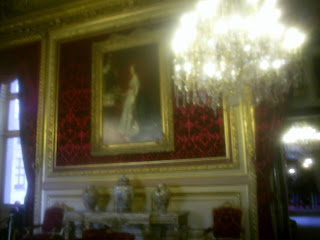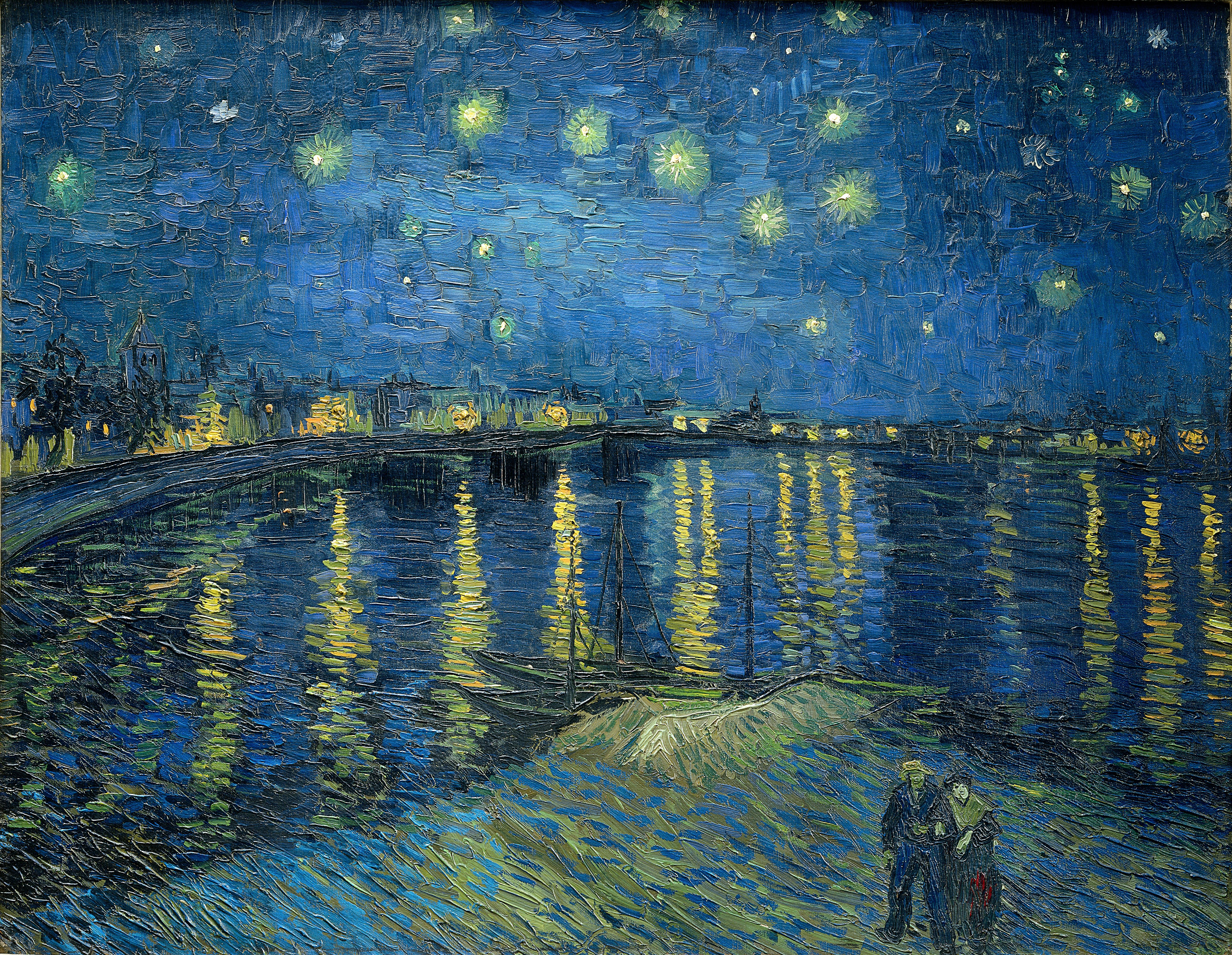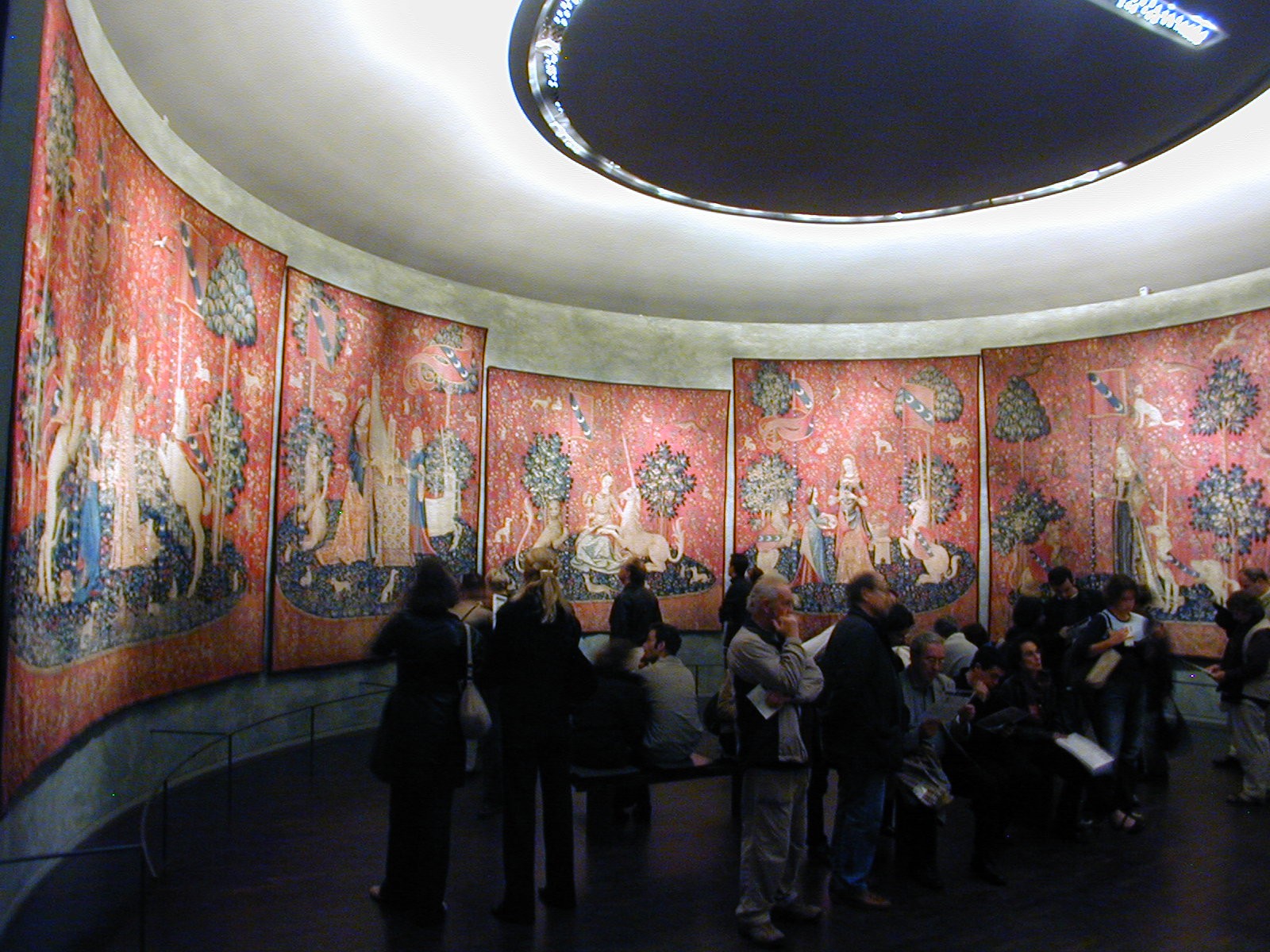2-22-2010
We were inspired by the brilliant colors and detail we saw in the cathedrals, with large stained-glass windows that were either colorful patterns or detailed mosaics that told stories. Old paintings were preserved in many churches that honored the story of the saints, and statues of saints stood outside of many cathedrals, and they were often gilded. We admired the Gothic styles of the cathedrals themselves, such as vaulted ceilings and sophisticated supporting columns.
Cathedral Statue
Cathedral Painting
Top: Older Stained Glass (the Rose window of Notre Dame)
Bottom: Newer Stained Glass
We also made time to admire the street art that had been added to the exteriors of buildings, here and there, along the streets. Many of them were embellished words or phrases, stylized with spray-paint shading and lighting details, and others were full pictures, such as the one below. We enjoyed seeing the current trends in street art, and noticed several recurring phrases and pictures that seemed to be drawn from the same artist. One such phrase was "Regarde le ciel," which translates from French as either "Look at the sky," or "Look to heaven."
2-23-2012
Today, we looked through the Louvre museum. This museum has a large collection of art from many different parts of the world including Greece, Egypt, and the Middle East. We saw the different rooms of Napoleon, lavishly decorated to display extreme wealth and opulence. He had collected many forms of art including statues, embroideries, painting, and china dishes.
The Louvre
Painting in Napolean's room
Tapestry from Napolean's room
2-24-2012
We looked through the museum Centre Pompidou. In here we saw more modern art which challenged traditional ideals of art. Some arts were rather simple but yet complex because they could be interpreted in diverse ways.The building itself was also a work of art where instead of hiding all the structural support for the building, it remained exposed.
Centre Pompidou
Tapestry of used bottle caps
Painting
Painting
Sculpture
Art made from chains
Painting
2-25-2012
The Musée d'Orsay is a large museum, converted from a train station, that celebrates the Impressionist period in art. Impressionism was art based on lighting and perspective of the subject, based on the feeling or "impression" that it gave. Arts from here included Van Gogh, Monet, and Manet. Many of the paintings depicted humans and landscapes with different parts emphasized through the lighting. The sculptures were mostly of the human body.
Musee d'Orsay
Starry Night (Van Gogh)
Les Glaneuses, or "The Gleaners" (Francois Millet)
2-26-2012
We visited the Musée de l'Orangerie. This museum also housed Impressionist arts. In this museum there were eight large and very impressive water lily paintings by Monet which took up the walls of four rooms. By the time Monet painted these, he was very old with declining sight, so he had to step back from the works often, and he used a long brush to paint these. Later on in this museum, we saw other Impressionist art along with Post-Impressionist art such as the early works of Picasso.
Musée de l'Orangerie
One of the eight large water-lily murals by Monet
2-27-2012
We visited the Musée Cluny, hardly believing that our time in Paris was more than half over. In this museum, we saw medieval artwork including stained glass, sculptures, paintings, and tapestries. One of the most famous of tapestries, the Lady and the Unicorn, can be found here. Tapestries were hung to keep drafts from leaking through castle walls, but the staggering beauty and detail of them was very inspiring because it took a group of people years to finish one. Most of the stained glass depicted a scene from the Bible along with different saints.
Musée de Cluny
Lady and the Unicorn
Sources:
- http://upload.wikimedia.org/wikipedia/commons/b/bb/MuseeDOrsay.jpg
- http://upload.wikimedia.org/wikipedia/commons/9/94/Starry_Night_Over_the_Rhone.jpg
- http://upload.wikimedia.org/wikipedia/commons/6/64/Millet_Gleaners.jpg
- http://www.placesinparis.com/wp-content/uploads/2011/12/Centre-Pompidou-Paris-Exterior.jpg
- http://upload.wikimedia.org/wikipedia/commons/5/53/Le_Louvre_-_Aile_Richelieu.jpg
- http://upload.wikimedia.org/wikipedia/commons/b/bb/Mus%C3%A9e_de_l%E2%80%99Orangerie_exterior.JPG
- http://upload.wikimedia.org/wikipedia/commons/5/51/Monet_Lilies_Louvre_2.jpg
- http://upload.wikimedia.org/wikipedia/commons/0/00/Musee_de_Cluny_1.jpg
- http://upload.wikimedia.org/wikipedia/commons/0/02/Lady_and_the_Unicorn_1.jpg







+115.JPG)
+117.JPG)
+118.JPG)
+119.JPG)
+120.JPG)
+121.JPG)
+122.JPG)
+123.JPG)































